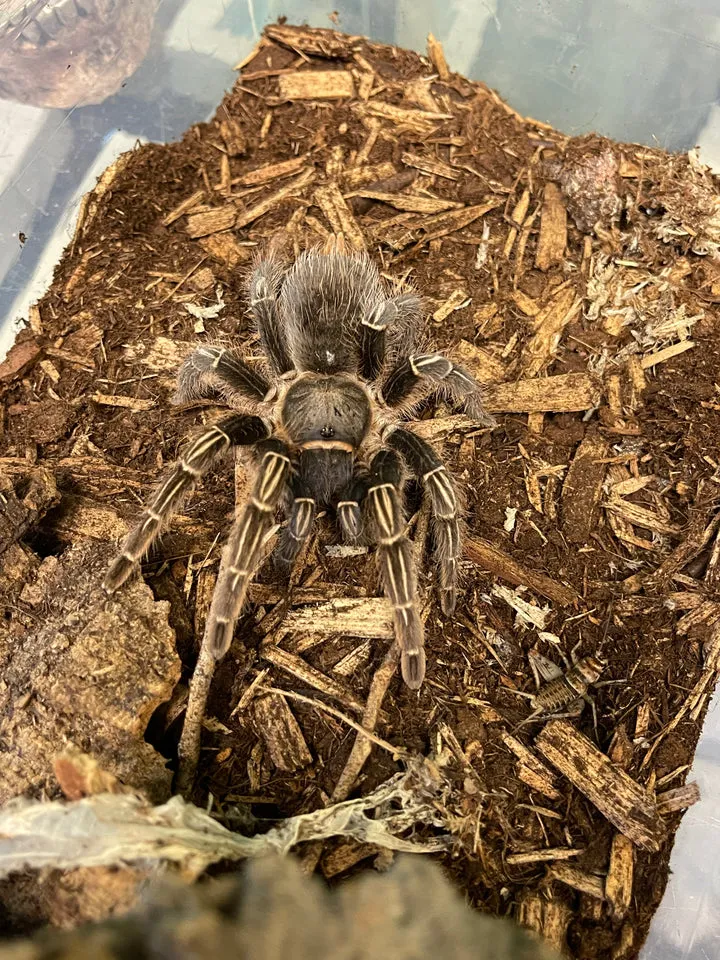What is a Stripe Knee Tarantula?
The Stripe Knee Tarantula, scientifically known as Aphonopelma seemanni, is a captivating species of tarantula that has gained popularity among arachnid enthusiasts. Known for its striking appearance and relatively docile temperament, the Stripe Knee is a favorite choice for both novice and experienced tarantula keepers. This species originates from Central America and is a terrestrial tarantula, meaning it primarily lives on the ground. Their striking appearance, characterized by dark coloration with prominent stripes on their legs, makes them a visually appealing pet. Understanding the basic facts about the Stripe Knee Tarantula is the first step in appreciating and properly caring for this fascinating creature, ensuring it thrives in a captive environment.
Origin and Habitat of Seemanni (Stripe Knee) Tarantulas
Stripe Knee Tarantulas are native to the tropical regions of Central America. Their natural habitat includes countries such as Costa Rica, Nicaragua, and Honduras, where they thrive in a variety of environments, including grasslands, scrublands, and open woodlands. These tarantulas are well-adapted to the warm and humid climates of their native regions. In the wild, they typically construct burrows or seek shelter under rocks, logs, or other natural covers to protect themselves from the elements and predators. The specific environmental conditions, including temperature, humidity, and substrate, play a crucial role in their survival and behavior, which makes it essential to replicate these conditions in a captive setting. Understanding their natural habitat is key to providing them with the best possible care.
Characteristics of Stripe Knee Tarantulas
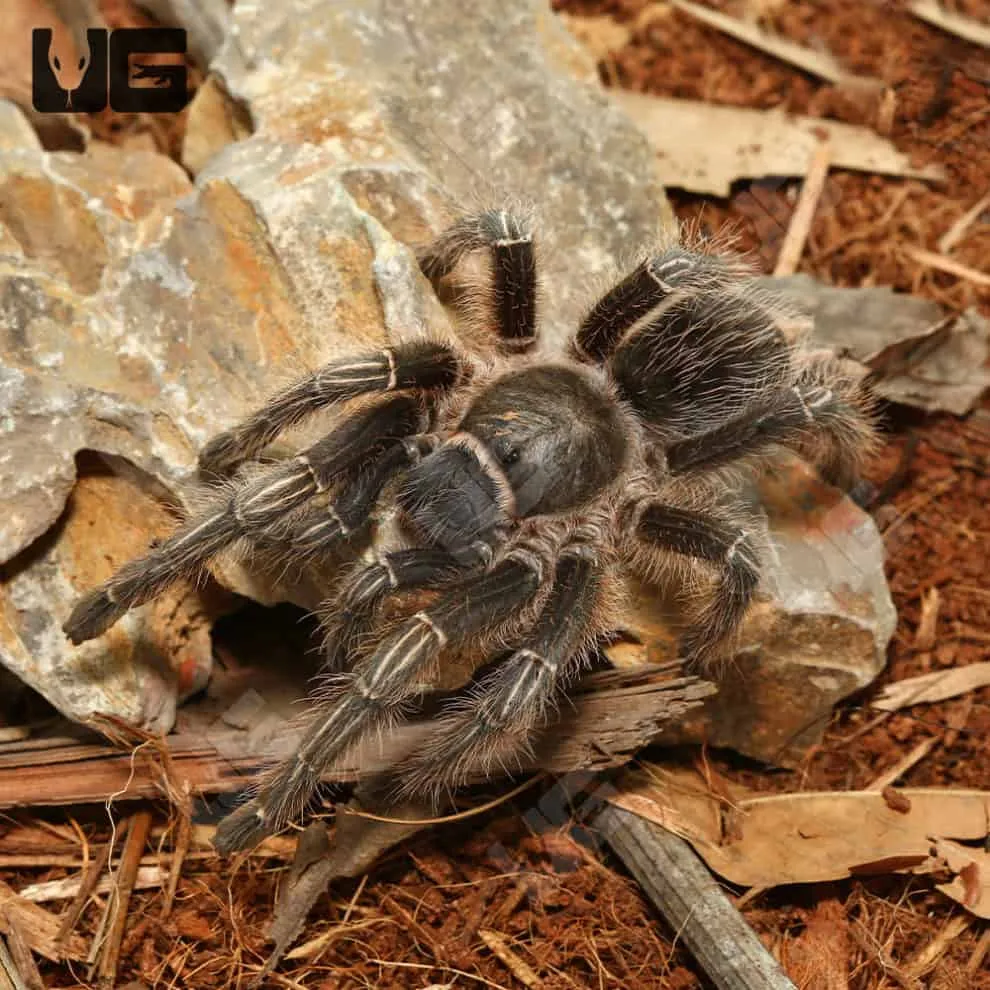
Stripe Knee Tarantulas are recognized for their distinctive appearance and relatively calm demeanor. Their bodies are typically dark, ranging from black to dark brown, with striking white or cream-colored stripes on their leg joints, giving them their common name. These tarantulas are medium-sized, with females often growing larger than males. They possess chelicerae, which are fang-like structures used for capturing prey and injecting venom. The presence of urticating hairs on their abdomen serves as a defense mechanism. The Stripe Knee Tarantula’s temperament is generally considered to be docile compared to some other tarantula species, making them a popular choice for beginners. The careful observation of these characteristics is crucial for owners to understand their pet’s needs and behavior.
Physical Appearance and Distinctive Features
The physical appearance of a Stripe Knee Tarantula is one of its most captivating features. Their bodies are covered in a dense layer of fine hairs, which give them a velvety texture. The striking contrast of dark body coloration and the light-colored stripes on their legs sets them apart from many other tarantula species. These stripes, which are typically white or cream-colored, highlight the knee joints, creating a visually appealing pattern. Females tend to have a slightly larger body size and a longer lifespan compared to males. The size of adult females can range from 5 to 6 inches in leg span, while males are usually slightly smaller. The coloration and markings can vary slightly among individuals, which adds to their unique charm and appeal.
Behavioral Traits of Seemanni Tarantulas
Seemanni tarantulas exhibit a range of behaviors, making them interesting creatures to observe. They are generally considered to be a more docile species, which contributes to their popularity as pets. They are primarily nocturnal, being most active during the evening and nighttime hours. These tarantulas spend most of their time hiding or resting in their burrows or under cover, especially during the day. When disturbed, they may flick urticating hairs from their abdomen as a defensive mechanism. They also have the potential to bite, although they typically only do so when feeling threatened. The understanding of these behaviors helps owners to provide the most appropriate care and create a comfortable environment for their pet. Careful observation of behavior can also help owners to detect any signs of stress or illness.
Diet and Feeding Habits for a Healthy Stripe Knee
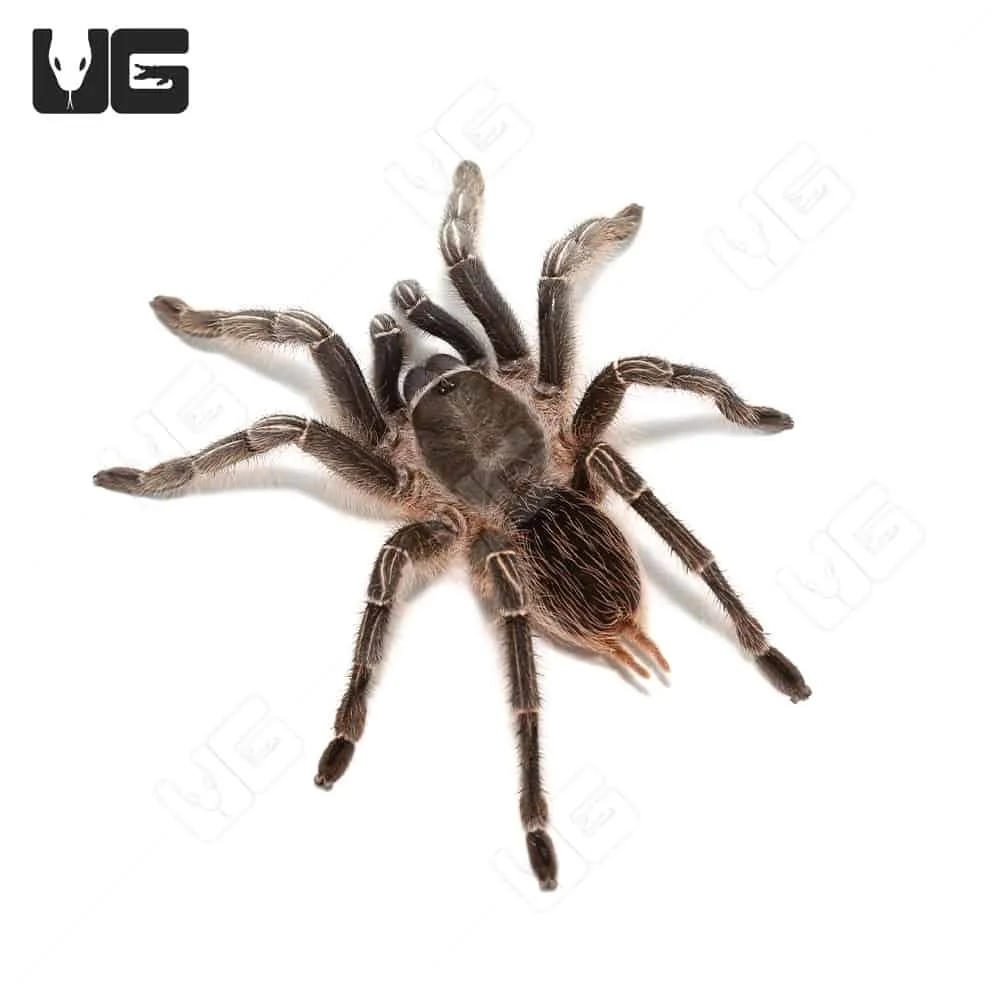
A balanced diet is essential for the health and well-being of a Stripe Knee Tarantula. In the wild, they are opportunistic predators, feeding on insects, small invertebrates, and occasionally small vertebrates. In captivity, their diet primarily consists of insects like crickets, roaches, mealworms, and other commercially available feeder insects. The size and frequency of feeding depend on the tarantula’s age and size. Spiderlings require more frequent feedings, while adults can be fed less often. It is crucial to offer a variety of insects to ensure a balanced intake of nutrients. Water should be available at all times, usually in a shallow dish. Uneaten food should be removed promptly to prevent the build-up of mold or mites, which can compromise the health of the tarantula. Regular monitoring of the tarantula’s feeding habits and overall condition is crucial for ensuring its health.
Suitable Enclosure and Environment for Seemanni
Creating the right environment is essential for the Stripe Knee Tarantula’s well-being. A suitable enclosure should be spacious enough for the tarantula to move comfortably, with enough floor space for burrowing and exploration. A glass or plastic terrarium with a secure lid is recommended to prevent escape. The substrate should be at least 4-6 inches deep, consisting of a mixture of substrates like coco fiber, peat moss, and vermiculite, to allow the tarantula to burrow. Provide a hide or shelter, such as a piece of cork bark or a decorative cave, for the tarantula to retreat to and feel secure. Ensure good ventilation by providing ventilation holes in the enclosure while preventing drafts. The enclosure setup should mimic the natural habitat and provide the appropriate humidity and temperature levels for the species.
Temperature and Humidity Requirements
Maintaining the correct temperature and humidity levels is crucial for the health of the Stripe Knee Tarantula. The ideal temperature range for this species is between 75 to 85 degrees Fahrenheit (24 to 29 degrees Celsius). A heat source, such as a heat mat placed on the side of the enclosure, can be used to maintain the required temperature, but it’s essential to avoid direct heat to prevent overheating. Humidity levels should be maintained between 60% and 70%. This can be achieved by misting the enclosure lightly every few days or providing a water dish. Monitoring these conditions with a thermometer and hygrometer is essential for making adjustments as needed. Consistent environmental conditions help in promoting healthy molting and overall well-being.
Essential Care Tips for Stripe Knee Tarantulas
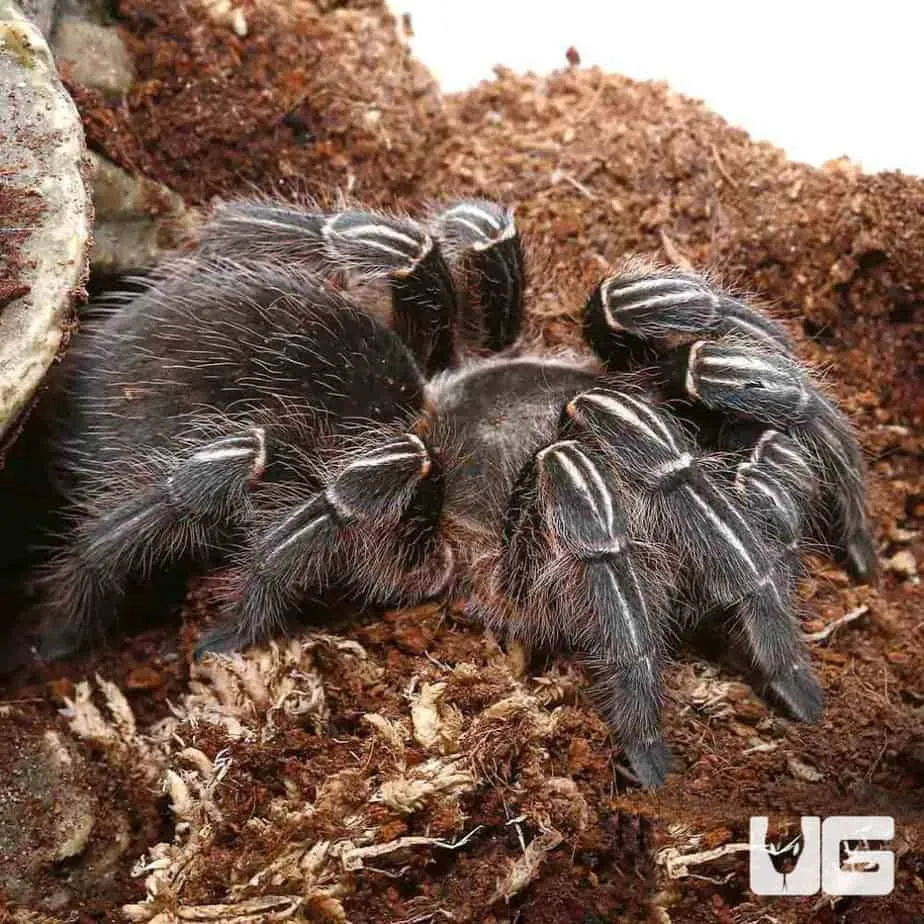
Several care tips are essential for ensuring the well-being of your Stripe Knee Tarantula. Regular cleaning of the enclosure is important, removing any uneaten food, old exoskeletons, and waste to prevent the growth of harmful bacteria. Provide a shallow water dish filled with fresh, clean water at all times. Avoid handling the tarantula unnecessarily, as it can cause stress. If handling is necessary, do so gently and with caution, as they can be delicate. Monitor your tarantula’s behavior, feeding habits, and overall appearance for any signs of illness or distress, such as lethargy, loss of appetite, or unusual behavior. Ensure appropriate ventilation in the enclosure to maintain air quality and prevent the build-up of harmful gases. Keeping an eye on these aspects will help you provide the best possible care.
Handling and Safety Precautions
Handling a Stripe Knee Tarantula should be approached with caution and respect. While these tarantulas are generally docile, they can bite if they feel threatened. Handling should be kept to a minimum and is generally not necessary for their well-being. If you choose to handle your tarantula, do so gently and slowly, allowing the tarantula to walk onto your hand. Avoid sudden movements or dropping the tarantula, as this can cause injury. Always wash your hands thoroughly before and after handling to prevent the spread of any potential irritants or pathogens. Be aware of the urticating hairs, which the tarantula may flick off as a defense mechanism; avoid touching your face or eyes after handling. Educating yourself on safety precautions and practicing careful handling techniques will promote both your safety and the safety of the tarantula.
Lifespan and Growth of Seemanni Tarantulas
The lifespan and growth of a Stripe Knee Tarantula vary depending on its sex and environmental conditions. Females typically have a longer lifespan compared to males, often living for 10 to 15 years or even longer. Males, on the other hand, typically live for 3 to 5 years. The growth rate of Stripe Knee Tarantulas depends on several factors, including feeding frequency, temperature, and humidity. They grow by molting, which involves shedding their exoskeleton. Spiderlings molt more frequently than adults. Molting is a vulnerable period for tarantulas; it is important to maintain a stable environment to avoid any stress. Providing proper care, a healthy diet, and a suitable environment can contribute to a longer and healthier life for your tarantula.
Common Health Issues and Prevention
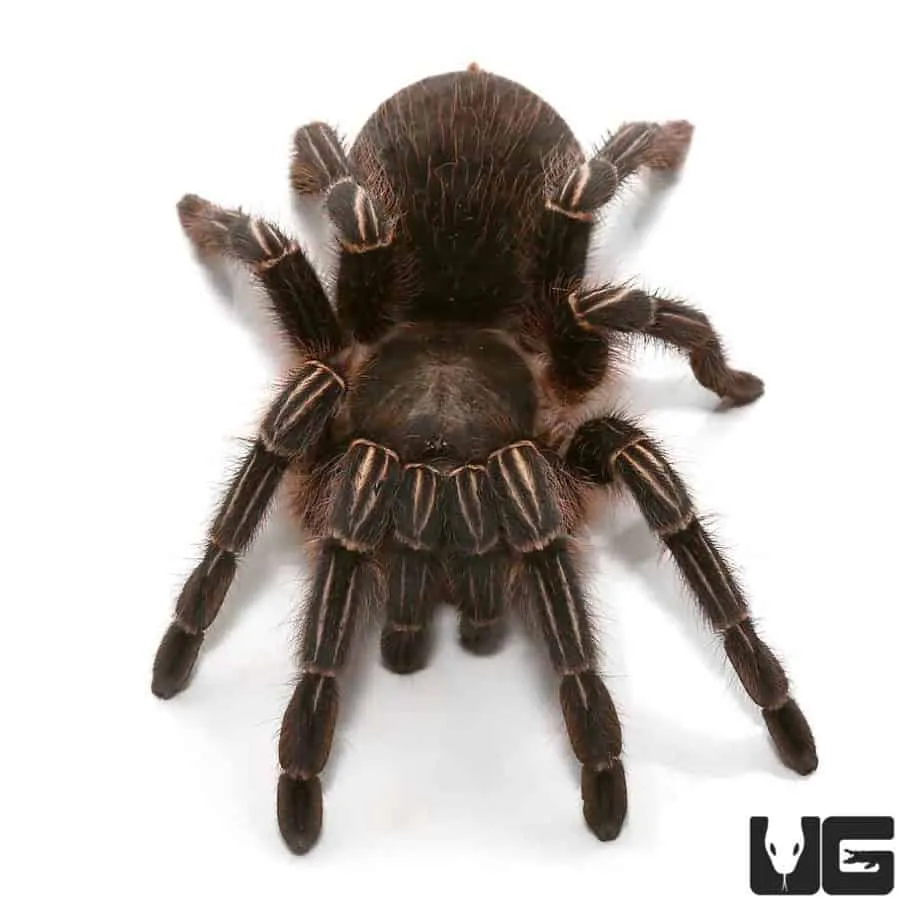
Like any pet, Stripe Knee Tarantulas are susceptible to certain health issues. Common problems include dehydration, parasites, and injuries during molting. Dehydration can be prevented by ensuring a constant supply of fresh water. Parasites, such as mites, can be avoided by maintaining a clean enclosure and quarantining new tarantulas before introducing them to your collection. Injuries during molting can be minimized by providing a stable, stress-free environment and avoiding disturbances during the molting process. Monitoring your tarantula’s behavior, eating habits, and overall appearance is vital for detecting any signs of illness or distress. It is crucial to consult an experienced arachnid veterinarian if you suspect your tarantula is ill. Early detection and prompt treatment can help manage and prevent serious health issues.
Breeding Seemanni Tarantulas
Breeding Stripe Knee Tarantulas requires specific knowledge and careful preparation. The process involves introducing a mature male tarantula to a mature female in a controlled environment. The female is typically larger and more mature than the male. After mating, the female may lay eggs in an egg sac. The egg sac is usually incubated under carefully controlled conditions, including appropriate temperature and humidity. Successful breeding requires meticulous attention to environmental factors and the handling of both male and female tarantulas to avoid injury. Spiderlings require specialized care, including appropriate feeding and housing, to ensure their survival and growth. Breeding these tarantulas is best left to experienced keepers due to the complexities and potential risks involved.
Interesting Facts about Stripe Knee Tarantulas
Stripe Knee Tarantulas offer numerous interesting facts. They possess urticating hairs on their abdomen, which they use as a defense mechanism against predators. Their venom is not considered particularly potent to humans, and bites are rare, but can still be painful. These tarantulas are nocturnal, and they are most active during the night. They can survive for extended periods without food, especially adult tarantulas. The lifespan of female Stripe Knee Tarantulas can extend up to 15 years, while males generally live for a shorter period. These fascinating arachnids contribute to the biodiversity of their natural habitats and are captivating subjects of study for both scientists and hobbyists.
